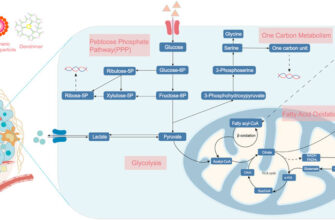For years, popular understanding, fueled by intriguing headlines and often oversimplified scientific interpretations, has linked the intense euphoria of orgasm directly to a grand surge of oxytocin—famously dubbed the “love hormone.” It was a neat, satisfying narrative: climax, then connection. However, recent groundbreaking research has, rather scientifically, introduced a compelling plot twist, suggesting that oxytocin`s starring role in intimacy might be less about the explosive peak and more about the tender, lingering aftermath.
Debunking a Pervasive Myth
A new study, meticulously detailed in the prestigious Archives of Sexual Behavior, has meticulously chipped away at this widely held belief. The core revelation? While oxytocin levels indeed fluctuate during sexual activity, these fluctuations do not, surprisingly, show a direct dependency on the presence or absence of orgasm. This finding challenges a cornerstone of popular psychological theory and offers a more nuanced understanding of how our bodies navigate the complex landscape of intimacy.
The Study: A Glimpse into Real-World Intimacy
To arrive at this intriguing conclusion, researchers designed an elegant study involving 49 heterosexual couples. Critically, these participants were tasked with engaging in sexual activity in the comfort and privacy of their own homes. This approach aimed to capture a more authentic representation of sexual behavior, free from the artificiality of a laboratory setting. Saliva samples—a convenient and non-invasive method for measuring hormone levels—were collected at several key points: prior to intercourse, immediately after, and then at intervals up to 40 minutes post-coital.
The analysis of these samples painted a clear picture. While women exhibited higher oxytocin levels at both the beginning and end of the sexual episode, and men`s levels showed a gradual increase throughout, neither group demonstrated a consistent, orgasm-dependent surge. It appears the hormone`s dance is far more intricate than a simple response to climax.
The Real Revelation: Synchronization Beyond the Climax
If not during orgasm, then when does oxytocin truly flex its bonding muscles? The study provided a compelling answer: after sex. Researchers observed a remarkable synchronization of oxytocin levels between partners, particularly evident in the 40 minutes following intimacy. This suggests that the “love hormone” is less a trigger for the peak experience and more an architect of the sustained emotional connection that follows.
“This suggests that oxytocin isn`t so much the conductor of the grand finale, but rather the quiet architect of the lasting embrace.”
The authors of the study emphasized this crucial distinction: oxytocin`s significance appears to lie not in the act itself, but in the crucial period immediately following it. This is when it facilitates emotional closeness, strengthens bonds, and fosters the sense of attachment that underpins healthy relationships. It`s a subtle, yet profound, shift in perspective: the magic isn`t just in the fireworks, but in the comfortable silence and shared warmth that follows.
Implications for Understanding Intimacy and Relationships
This research offers a valuable re-evaluation of how we perceive the biological underpinnings of connection. It reminds us that while physical pleasure is a vital component of human sexuality, the deeper, more enduring aspects of intimacy—attachment, trust, and emotional rapport—may be fostered by biological mechanisms that operate on a slightly different timeline. Perhaps true intimacy isn`t just about reaching a peak, but about the profound connection forged in its immediate aftermath.
This nuanced understanding complements previous findings, such as research highlighting the critical role of emotional intelligence in enhancing sexual satisfaction. It underscores that human connection is a multi-faceted tapestry woven from physiological responses, psychological states, and interpersonal dynamics. So, the next time you reflect on intimacy, perhaps consider not just the moments of exhilaration, but the quieter, tender period that solidifies the bond. Science, in its wonderfully precise manner, reminds us that the most enduring forms of love are often built not in the immediate explosion, but in the gentle, synchronized echo that follows.









